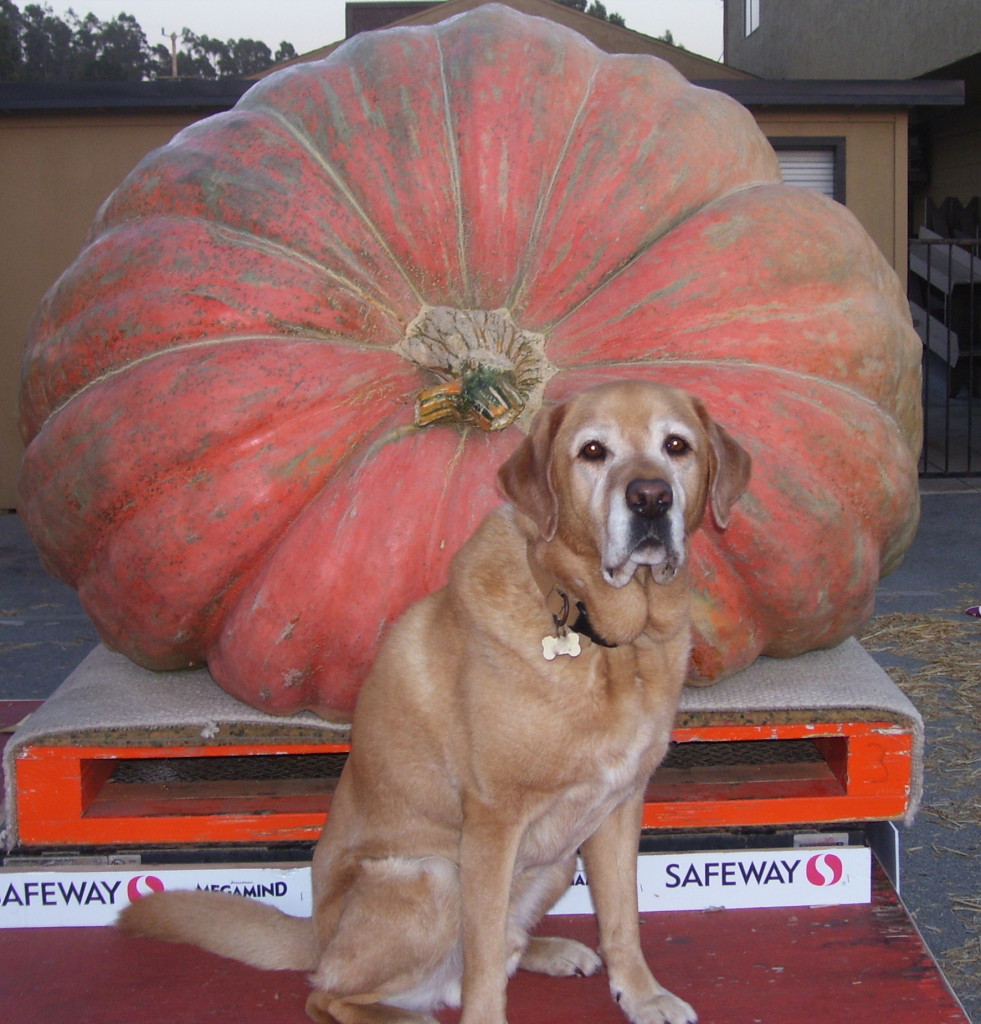Dogs Who Are Home Alone All Day
Tina Traster
During the day, Jane Green, an oboist who lives in Buena Park, California, teaches music at home and whips through daily chores before leaving for nightly performances. She also shuttles Dolly, her Labrador mix, to and from doggy day care. Dolly doesn’t go to day care because she’s destructive. She goes to day care—the fee for which is $6 a day—because Green believes that Dolly deserves a full-fledged social life and that having one makes her happy and well-adjusted.
“I never thought I’d do something like this,” says Green. “It feels exactly like raising a toddler. They need a lot of attention, and they want to have fun all day. The best thing to do is to make sure a dog is well-socialized and has a community.”
Green has learned from experience. Prior to Dolly, Green lived with a rescued pit bull who suffered extreme “separation anxiety,” a kind of panic behavior in which the dog falls apart psychologically when the owner departs. The pit bull destroyed the house when Green left him alone. He even went ballistic if she left him in the car while she pumped gas. Eventually Green gave the dog to a family with many children so he wouldn’t have to be left alone.
Up the Social Ladder
Dog guardians across America grapple with both a dog’s emotions and their own when it comes to leaving their best friend home alone. Not only to quell the symptoms dogs suffer but also to relieve their own guilt over leaving them for 10-hour stretches, dog lovers are jumping through hoops to give their companions a fuller and more stimulating dog lifestyle. They are taking their canines to day care, hiring pet sitters or dog walkers, matchmaking them with neighbors’ dogs, arranging play dates and, increasingly, taking them to the workplace.
In the past, efforts to keep a dog occupied during the day were undertaken in response to the bored and anxious animal’s destructive behavior or to neighbors’ complaints about his unrelenting barking or howling. Today, however, we just as often labor to create a more enriched social world for our dogs—many of whom show no signs of suffering—because we’re more sensitive to their need for company and stimulation. According to a 2000 study by the Lakewood, Colorado-based American Animal Hospital Association (AAHA), 75 percent of surveyed pet owners feel guilty about leaving their animals at home while they go to work, and 38 percent admit to calling home to talk to those animals. Some posit that the new enlightenment about the complex emotional life of dogs means that Canis lupus familiaris has achieved higher status in American society. The dog who used to sleep in the barn now sleeps in our bed. Dogs today have birthday parties, wardrobes, health foods and spa services. A primary source of companionship, especially for millions of singles, today’s dog is truly a member of the family.
Because we see our dogs as family members, many of us are reluctant to give them “latchkey treatment.” This generation knows some of the ills of being left home alone during its youth as well as the guilt involved in relegating the care of their children to others. Such pathos may explain why many dog lovers take pains to consider what dogs need from us rather than focusing solely on what we want from them.
Dr. Stephanie LaFarge, psychologist and senior director of the ASPCA’s Counseling department, says that humans have become much more empathetic toward dogs’ needs. Even when dogs do not exhibit distress at being left alone, we tend to “project” or to imagine that the animal is sad. “Some dogs cope when left alone, so there’s a very subjective component to assessing what an animal needs,” says LaFarge. “But even if it’s the human need to make sure a dog is not lonely, that is legitimate. It shows that we can empathize by putting ourselves in an animal’s place. It’s only natural to empathize with creatures who are part of our family.”
Social Skills
Experts stress the importance of socializing a dog during her puppy years. “If you deprive a puppy of social experiences in the well-intentioned goal of protecting her from [negative] experience and disease, the net result is damaged social capacity,” says Dr. Rolan Tripp, an animal behaviorist, author and veterinarian at VCA-La Mirada Animal Hospital in La Mirada, California. “The point of day care and puppy class and the dog park is that they are part of developing emotional stability and flexibility.”
Many of the symptoms of separation are obvious and painful for dog owners who need to go out and earn a living. An estimated four percent of America’s 55 million dogs supposedly has separation anxiety, and many dogs are relinguished to animal shelters every year for behavior problems. While some owners will try independence training, exercise and drug therapy, many experts say early and frequent socialization with other animals or living in a multi-animal home may produce a healthier dog.
“The worst mental punishment a dog can be given is to be kept alone in a tightly confined space where nothing varies,” writes biologist Desmond Morris in Dogwatching (Crown Publishers, 1986). Experts agree that dogs get lonely when they spend much of their time alone because they are pack animals. Descended from wolves, who live and work in groups, dogs are social beings, and we have become their pack members. If they are deprived of companions—both canine and human—they suffer.
Animal behaviorists agree that dogs need environmental stimulation, just as humans do. Dogs will work to see other dogs by pushing a panel with their muzzles. They find activity rewarding. To remove a dog from her own pack without providing a substitute pack can cause great distress to the animal. Those who suffer from separation anxiety demonstrate despair by tearing up furniture or other household items, urinating or defecating, vocalizing, digging, running away or even self-mutilation, which is behavior that provides some sort of distraction. Of all the behaviors that demonstrate despair, incessant barking tops the list. Dogs may suffer silently and without symptoms, as well.
Changing Times
Dogs have had to adapt to society’s changing perception of what a dog is. During the first half of the twentieth century, most dogs “worked” all day, hunting and herding. Many slept outdoors. By the 1950s, however, many a dog’s life took a turn toward “cushy.” By then, many lived inside and were comforted by the companionship of moms who still stayed home to raise children.
Fast-forward through the ’60s, ’70s, ’80s and ’90s—four decades of tornadic change in the structure of the American family. More and more, both adults worked, and children spent elongated days at schools and day-care centers. “Singles” proliferated, with their long work hours and busy schedules. And with stricter health laws and the sprawl of suburbia, dogs were no longer welcome at the food mart or drug store. Consequently, dogs were not only spending weekdays home alone, but on weekends they were left again as we ran around town doing our chores.
“Dogs were created to do jobs,” says Jacque Lynn Schultz, a certified pet dog trainer and director of special projects for ASPCA Animal Sciences. “It’s as if we’ve taken their jobs away from them and created unemployed workers. There’s a lot less for them to do, and they need outlets for their energy and drive.”
“Working dogs do need a job,” agrees Dr. Marty Becker, a veterinarian and coauthor of Chicken Soup for the Cat/Dog Lover’s Soul. “Retrievers want to retrieve. By shoehorning dogs into our ecosystem, we’ve dumbed them down. They’re accustomed to a world that is rich with color. We’ve slowly dimmed it down, and it’s time that we return some of their genetic potential to them.”
Enriched Environments
Becker points to the trend in modern zoos to keep animals in groups and offer them more stimulation and challenge. “What’s happening to domestic dogs is what happened at zoos two decades ago when zoologists began to consider that animals need to express themselves, and [their environment] needs to be enriched.” Becker believes that if dogs must be left for a lengthy span, they should be given long, exerting walks before their guardians depart and left with chew toys or food puzzles so they have some stimulation while we’re away.
The growing awareness of the dog’s psyche helps explain the explosion of doggy day-care centers. People in metropolitan areas are willing to spend $100 a week to make sure their dogs are happily occupied while they’re at work.
“Animal psychology is far more accepted now,” says Joseph Sporn, who in 1987 founded Yuppie Puppy Petcare Inc. in New York City, the first doggy day-care center in the country. (Sporn says there were more than 500 independent centers nationwide in 2001.) “People are more receptive to thinking about what their dogs are thinking about.”
Sporn agrees that dogs thrive in a pack environment. “It’s what they crave,” he says, recalling that when he first opened the center, he was the butt of jokes. “As word spread, people began to realize it wasn’t only good for their dogs, but it was good for them, too, because it eased their guilt.”
At Yuppie Puppy, which charges $22 per day, dogs have indoor and outdoor play space, a kiddy pool, sprinklers, Murphy beds and constant supervision. Sporn conducts an interview before admitting a dog. There have been a couple of bites over the years but no fatalities. Dogs who have not been spayed or neutered are ineligible, as are those with a history of aggression. Sporn says that most dogs are good candidates for doggy day care, even the shy, reclusive ones. “Animals are antisocial if they were separated from their pack too early or were not socialized as puppies,” says Sporn. “Even so, I think a dog is better off with other dogs, even if he is not interacting, because at least he’s able to stimulate himself with observation.”
At some centers, day care means more than just food, companionship and a walk. At a growing number of day cares, dog “parents” can keep an eye on their companions via video cameras wired to a private Web site—an idea borrowed from the nanny cam, which is popular among working parents. The video cameras offer live coverage of an animal’s daily activities, from sleeping and eating to socializing.
Two’s Company
Not everyone who has a dog can afford doggy day care, nor is every dog a good candidate. In The Latchkey Dog (HarperCollins, 2002), New York City-based veteran dog trainer and author Jodi Anderson cautions, “Doggy day care has its advantages, but too much time around other canines might just teach your dog to become more competitive with them… be sure to keep in close touch with the caregivers who monitor your dog’s daily behavior.” Anderson also warns that too much of a good thing can backfire. “Twice a day with the dog walker,” she writes, “and three times a week at day care. Three weekends a month at the country house and one weekend with the dog sitter. Dogs who have what I call ‘extended packs’ (dogs who live with their immediate pack but spend a good deal of time with other people, or outside pack members) are the quintessential latchkey dogs.”
For some dogs, being thrust into a social situation is as painful as it is for the wallflower to go to the prom. Such dogs might be happier to have another dog—or cat—at home. Throughout the ages dogs have bonded with all kinds of creatures including lions, horses, even birds. According to the AAHA study in 2000, 44 percent of participating pet guardians acquired an animal simply to keep another animal company. In its 2001 survey, AAHA found that 31 percent of pet owners plan visits with others who have pets just to allow their pet to socialize.
Becker believes that dogs share a bond and give each other things that humans cannot duplicate. “I can’t look in the park and see a bird’s eyeballs or smell a pheasant,” he says. “This is something dogs share. It’s like being a woman and never being able to talk to or confide in another woman.” Becker concedes, however, that it’s not cruel to have only one dog, and a dog is far happier on a couch than in a shelter.
Introducing a second dog, or even a cat, takes special consideration. For dogs who have trouble being alone, it could even be a mistake because a new dog might learn to mimic the same undesirable behavior. “If your dog has been diagnosed with separation anxiety, bringing in another dog is unlikely to solve the problem,” says Rolan Tripp. Like others, Tripp believes that bringing a second dog or even a cat into the home can be productive if the original dog is well-adjusted and if the dog owner takes strategic steps in bringing the animals together.
In the case of dogs, Tripp recommends that the two animals first meet on neutral territory. They should be held with leashes slightly slackened and given a chance to do nose-to-nose sniffing. Once that progresses to genital sniffing, the guardian must gauge whether one of the dogs is willing to be passive and whether the encounter is “nonaggressive.” If the dogs show signs of aggression to one another, it might be best to try another potential housemate or playmate. If, however, you’re determined to bring two animals under the same roof and there is tension between them, Tripp says you must work with each dog separately to alter its perceived place in the pack.
Tripp believes that a cat may ease an “only dog’s” loneliness. “Dogs know that a cat’s not a dog, but if a young kitten is raised with a dog, there’s a chance the pair will bond and sleep together.” Tripp warns that the key to starting a good relationship between a cat and a dog is a slow introduction, with the dog on a leash and the cat in its carrying case with the door closed. The dog should be allowed to smell the cat slowly and the cat should be able to assert herself. Tripp recommends allowing the cat to alight where the dog cannot reach her when the carrying case is first opened. “If you make the horrible mistake of letting the cat run loose, the dog’s prey instinct will be triggered, and the cat’s first response will be, ‘I’m outta here!’”
Other Options
Urbanites who do not have enough space for a second animal are honing matchmaking skills. They spot a dog in their neighborhood or apartment building—often another of the same breed—who looks like a companionable mate for their own canine. That’s what Judith Speyer of Manhattan did, and she says that she and Chloe, her shih tzu, are much happier for the arrangement.
Speyer and a neighbor with a shih tzu arrange play dates, share the walking responsibilities and rely on one another to dog-sit when either goes out of town. “Dogs need company,” says Speyer. “I don’t like leaving Chloe alone all day in the apartment. When I tell Chloe that we’re going down to see Chelsea, she gets all excited. She understands that this is part of her life in the same way that I look forward to seeing a friend. She has an enriched social life, and this has made her a much happier, more secure dog.”
For some, the only way to avoid leaving a dog alone is to take him to work—and fortunately for guardians, there’s a growing national trend to allow dogs in the workplace. AAHA reports that 19 percent of pet owners surveyed in 2000 took their dogs to work at least once a month during the year.
Laura Endicott of Forest Hills, New York, is lucky because she can bring Mufasa, her akita, to work. Endicott says Mufasa is quite content at work, although it wasn’t because of separation anxiety that she took him with her in the first place. In fact, she acknowledges that it was her own assumption that Mufasa would feel bored and lonely that motivated her to bring him to work every day.
“I only got a dog because I knew he could come to work with me,” says Endicott. “I didn’t think it would be fair to leave him, especially because I work long hours. I never thought I’d become this attached, but he’s like my child. Sometimes I wonder if I’m just being anal. He would probably do just fine at home because he sleeps most of the day. But I just love him so much, and I want to make him happy.”
Tina Traster is a freelance writer based in New York City.
Choosing Pet Care Wisely
Just as parents feel anxious about choosing nannies or day-care centers for their children, pet parents experience the same trepidation about doggy day-care centers, dog walkers and pet sitters. And with good reason. Currently there are no state licenses or certification requirements for these professions. This means that pet parents must do their homework. Guardians should request and follow up with references, observe the day care or pet walker in operation—anonymously if possible—and ask lots of questions. Here are some starters:
For day-care centers
For dog walkers or in-home sitters*
* From Standards of Excellence, Pet Sitters International, 201 East King Street, King, NC 27021. www.petsit.com; (336) 983-9222. Used with permission.
|
Courtesy of
ASPCA
ASPCA


















